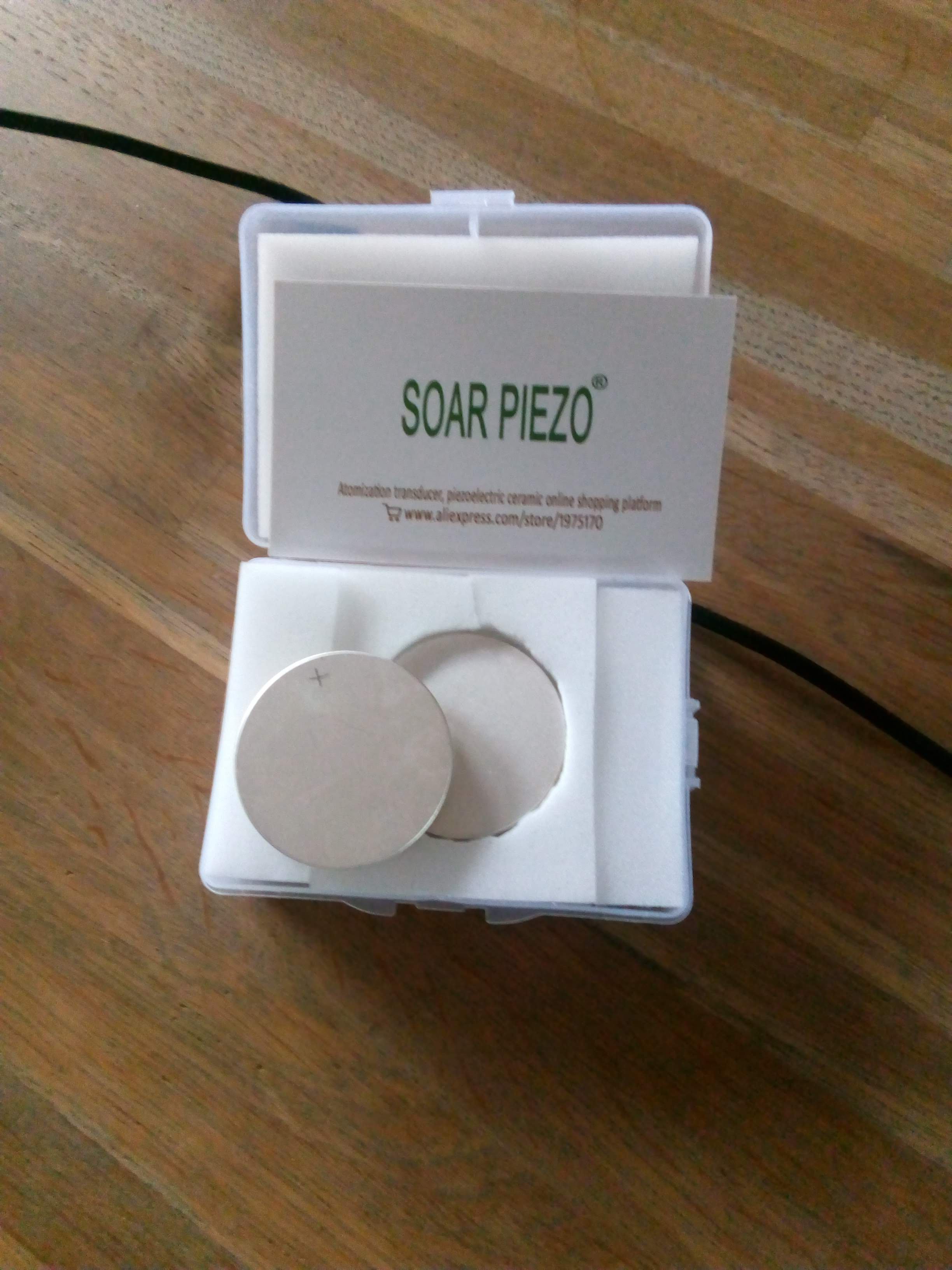-
Driving the transducer
10/04/2020 at 12:56 • 1 commentThe transducer needs to be driven by a matching transformer. But how do we calculate the windings ratio on this, and what is this transformer made of ?
After some searching I found an article about building a sonar that has a decent explanation on how to calculate the transformer, based on the known capacitance of the transducer:
The inductance of the secondary winding L2b must be such that the resonant frequency of the circuit forming the L2b, the distributed transmit/receive transmittance and C22 are identical with the same transmit/receive element frequency.
This frequency is given by the relation f = 1 / 2π x L x C, where f is the resonance frequency in Hz, L is the inductance at H and C the total capacity in F.
Reversing the terms, L = 1 / 4π2 x f2 x C, and for f = 200kHz, C = 3n2 we have L2b = 198 μH.The corresponding number of turns N is calculated from the relation N = L2b / Ls. where Ls is the specific inductance of the ferrite core. If, for example, Ls = 250nH, the number of turns becomes 28.If the coil ratio is 1:9, L2a must have 3 turns.
If a ferrite core with a different special inductance value is used, the above calculations should of course be re-generated. The turns ratio can be held at 1:9. Correspondingly, if a different transmit/receive element is used, L2 inductance must be recalculated.
Also, if the frequency is not 200 kHz, C14 must be recalculated by: C14 = 1 / 4π2 x f2 x L1, where f is the new frequency and L1 = 630μH
Now this article is clearly a copy of a muchh older one, as I found something with exactly the same text and illustrations in a Dutch magazine Elektuur from 1984. Actually it must be old, since the LM1812 chip that is used here is obsolete since the late nineties. Now what both articles have wrong is the relation between the AL value of a coil and the inductance per winding, which is the number of windings squared.
Now my piezo disc has a capacitance of 6000 pF and a resonance frequency of 512kHz, so if I fill out the formulas, this is what I get:
(Calculations done in SMath Studio, an excellent free program for this)
Secondary inductance should be about 16 uH
I found a coil inductor of 200uH, and counted the number of windings (57). So to get to 16 uH Ill need 4.6 windings. Which seems a very low number, and also nearly impossible to get exactly right. And after I actually tried I can confirm this does not work at all. -
Electronics
09/21/2020 at 20:42 • 0 commentsA Sonar system consists of several blocks:
- A transmitter stage. Usually a push/pull switching driver consisting of a pair of power FETs and a driver
- A frequency burst generator. An oscillator with gating to create a short burst at the required frequency
- Amplifier and filter for receiving the return signals
- Digitizer to sample the return and make it available in digital form.
For the burst generation and sampling it seems obvious to use a micro-controller board. Preferably one with a decent clock speed so it can support a fast AD converter and a high frequency burst signal with decent precision. As the sound travels through water at 1500 m/s, you will need to sample at at least 150 kHz to get to a centimetre resolution. And I chose a 512kHz piezo, so the controller needs to create a square wave burst at this frequency.
The standard Arduino boards are obviously too slow for this, so I thought of using an ESP32 board like the WEMOS Lolin32. But I soon found out that it is hard to get a good sample rate on the AD inputs. Even when using low level programming it seems that 90 kHz is about the maximum. So I soon came to the Teensy boards. A standard Teensy has an AD sample rate of up to 400kHz. Added benefit: the Teensy platform focusses on audio processing and sampling so a lot of functionality is available out of the box.
![]() It looks like even the cheapest Teensy, the TeensyLC (yes,LC for Low Cost) might be sufficient for this task. But will it also be able to generate the transmit pulse and necessary control signals ? I will need a 512kHz burst, and some analogue ramp signal for the Time Variable Gain amplifier. And it turns out that this is not just possible, its also very simple.
It looks like even the cheapest Teensy, the TeensyLC (yes,LC for Low Cost) might be sufficient for this task. But will it also be able to generate the transmit pulse and necessary control signals ? I will need a 512kHz burst, and some analogue ramp signal for the Time Variable Gain amplifier. And it turns out that this is not just possible, its also very simple. int TX_Pin=23; unsigned long TX_Freq = 512000; void setup() { analogWriteFrequency(TX_Pin, TX_Freq); analogWriteResolution(10); // analogWrite value 0 to 1024 Serial.begin(115200); } void loop() { // Transmit burst analogWrite(TX_Pin,512); delayMicroseconds(20) ; analogWrite(TX_Pin,0); delay(5); // TVG Ramp for (int val=0;val<1024;val++) { analogWrite(A12,val); // Use the DAC output on A12 delayMicroseconds(100); } }This simple Arduino code generates a 512 kHz burst, and an analogue ramp signal on the dedicated DAC output:
![]()
The first image is a continuous square wave of 500kHz, just to show how accurate the PWM frequency setting is (very accurate). the second shows the burst signal, which is slight longer than the 20 uS delay, probably because it also takes time to execute the command that switches it off. And the last image shows the linear ramp that starts 5 mS after the transmit. The ramp is linear, but it could be any shape, either from a formula or from a table.
-
Housing and Transducer mounting
09/15/2020 at 11:17 • 0 commentsFor the echosounder I need to create a housing that has the following specifications:
- Waterproof to a few meters
- Can be opened and closed
- Contains feed-through for cables or connectors
- Cheap, preferable made from off the shelf parts
Now I designed and built several subsea housings in the past as it is part of my job, but these are always custom made at a professional machine shop. Usually they consist of Delrin plastic tube with special shaped end-caps that have double o-rings seals.
There are a few examples around of people who built waterproof housings, and most of them use standard PVC parts as available in any hardware store. The one I like a lot is this one:
https://thecavepearlproject.org/category/diy-underwater-housings/
![]()
Not only do they use standard parts, the result looks really good.
First I thought this concept was not usable for me since these PVC parts are produced and sold only in the US, but recently I found that they are sold on Amazon and actually by Formufit online as well and shipped worldwide (as far as I can see)
But this also may be over-complicated for my design. So I just started by drawing the piezo-disc, and the the nearest size PVC tube I could find (50 mm) to see what i could do with my 3D printer.
![]()
The grey part is standard PVC, the yellow is what I intend to print. The channels as visible in the cross-section view will be used to pour the epoxy or PUR resin in, which will seal the transducer element. The idea is that the 3D printed part will form the backing on the transducer. And when I print this using a 30 - 50% infill with honeycomb structure it will be both very stiff, and filled with air which will block acoustic reflections from the rear.
Remains the top section, which I'll have to close in a way that it can be opened.
![]()
And yes, the transducer end works out as intended. After soldering a thin coaxial wire to the piezo disc I can glue it on the base.
-
The Piezo discs
09/09/2020 at 18:29 • 2 commentsIf you search for 'Piezo Ceramics' you will soon find that there are several (not a huge number) suppliers. Most of these suppliers however require that you send them the specifications of the required parts so they can make you an offer for something that is basically custom made.
Only recently some suppliers offer some specific parts from stock
The German company PI (Physik Instrumente) has a store with some selected discs at reasonable prices. They also have really nice section with technical info on Piezo materials
STEMiNC (Steiner and Martin Inc) Sell parts in small quantities, but the shipping and handling are relatively expensive if you only need one or two pieces.
And of course there is China. There are plenty of manufacturers there, and thank to AliExpress these are also approachable to us (those who do not speak or read Chinese ...) Here the choice is almost overwhelming, but it's not always clear what is available in small quantities or what the specs are for a specific item. In the end I opted for SOARPiezo. :
Ultrasonic Piezoelectric Ceramic Disc PZT 40x4mm-PZT5
A
This disc has a 'thickness frequency" of 512 kHz which is a frequency that is commonly used for short / medium range echosounders. Depending on circumstances, ranges of 50 to 100 m should be possible.
These discs are €5,20 each, and with a €7,- shipping that is not too bad. So I bought 4, and they arrived in less than 2 weeks:![]()
Nice touch: they marked the '+' side. Not relevant if it is used as a single transducer echosounder, but very nice to know if you want to build an array where the phase of the individual transducers must match.
 Cees Meijer
Cees Meijer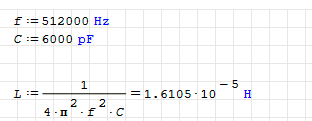 (Calculations done in
(Calculations done in 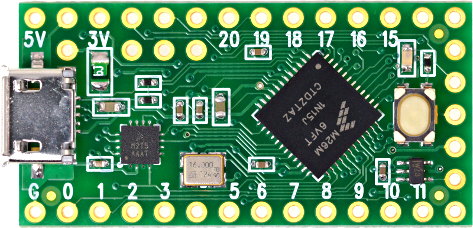 It looks like even the cheapest Teensy, the TeensyLC (yes,LC for Low Cost) might be sufficient for this task. But will it also be able to generate the transmit pulse and necessary control signals ? I will need a 512kHz burst, and some analogue ramp signal for the Time Variable Gain amplifier. And it turns out that this is not just possible, its also very simple.
It looks like even the cheapest Teensy, the TeensyLC (yes,LC for Low Cost) might be sufficient for this task. But will it also be able to generate the transmit pulse and necessary control signals ? I will need a 512kHz burst, and some analogue ramp signal for the Time Variable Gain amplifier. And it turns out that this is not just possible, its also very simple. 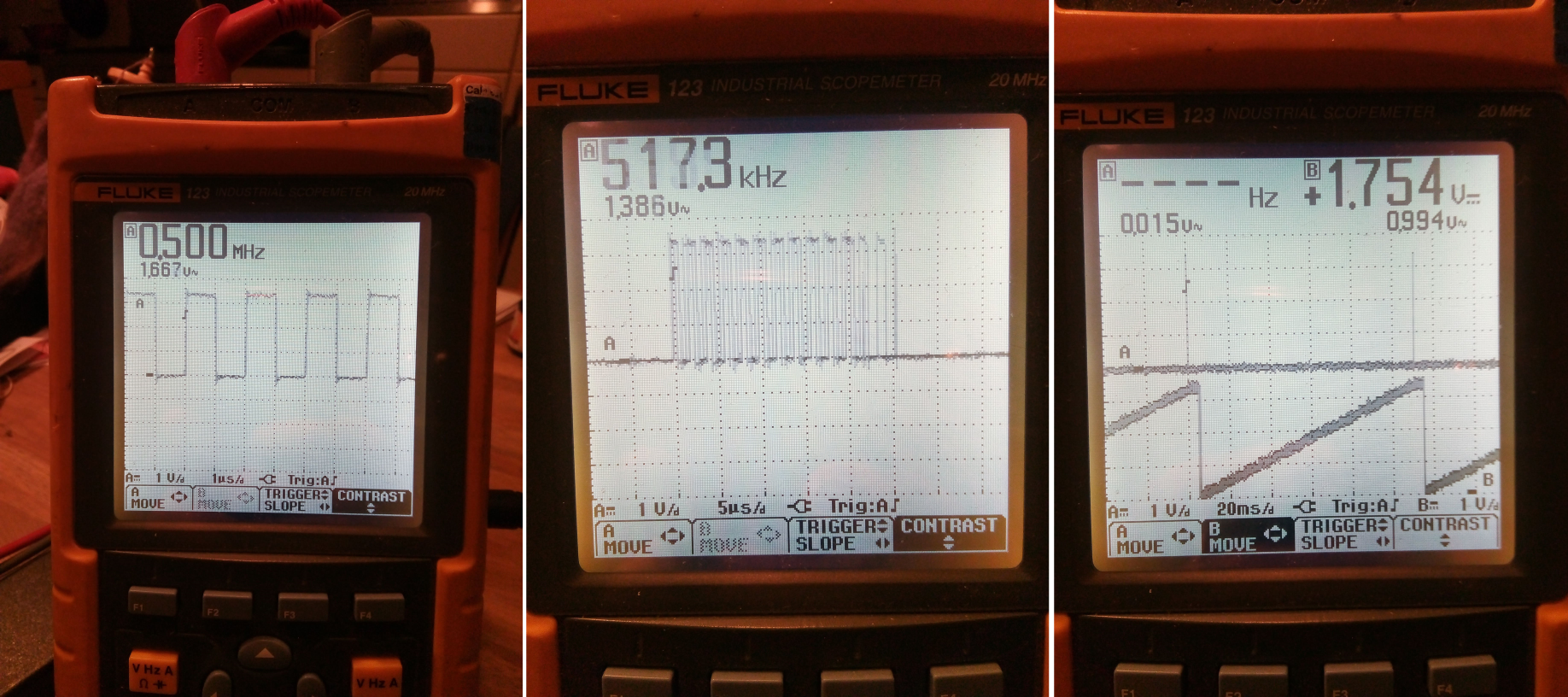

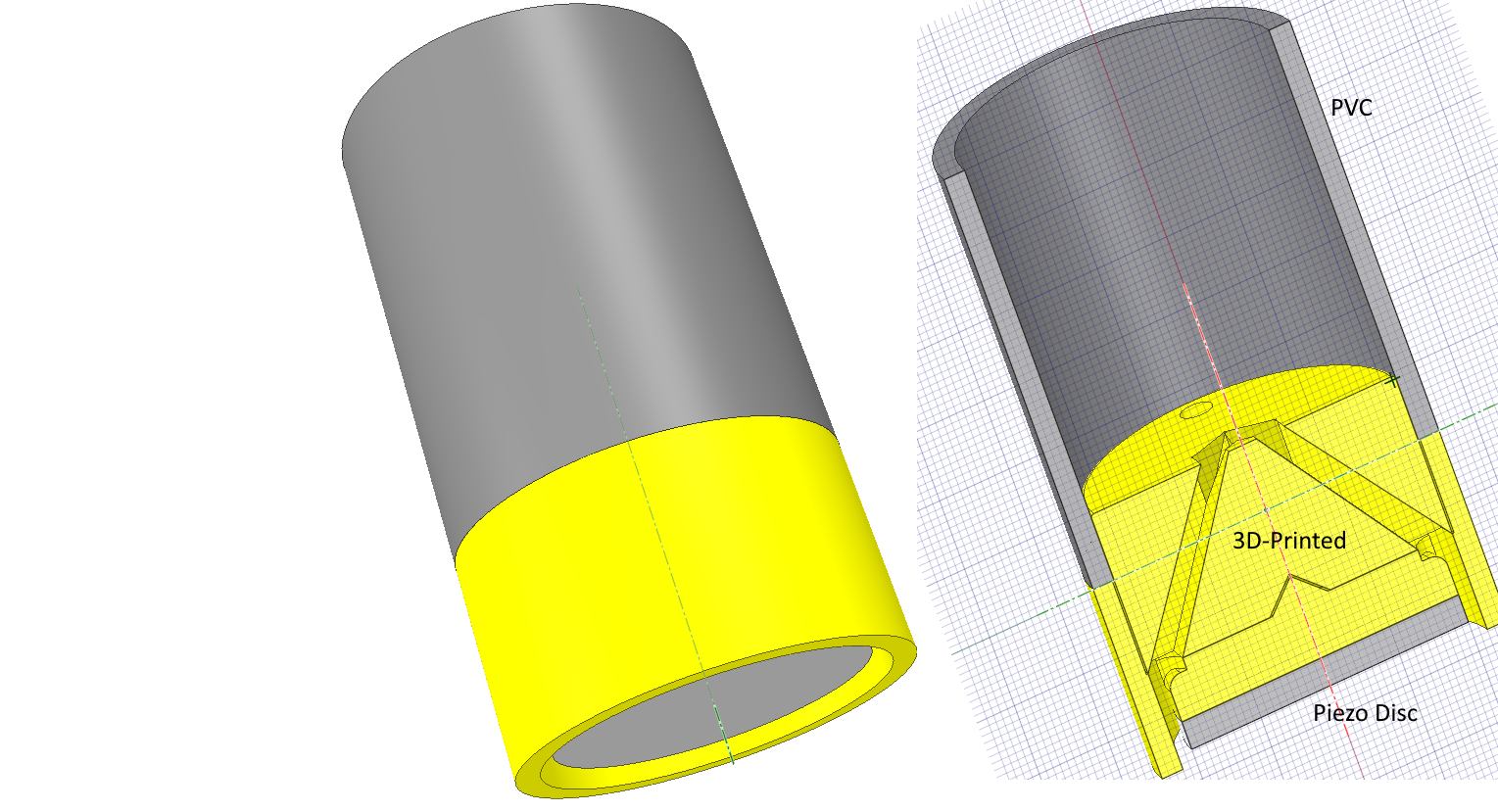
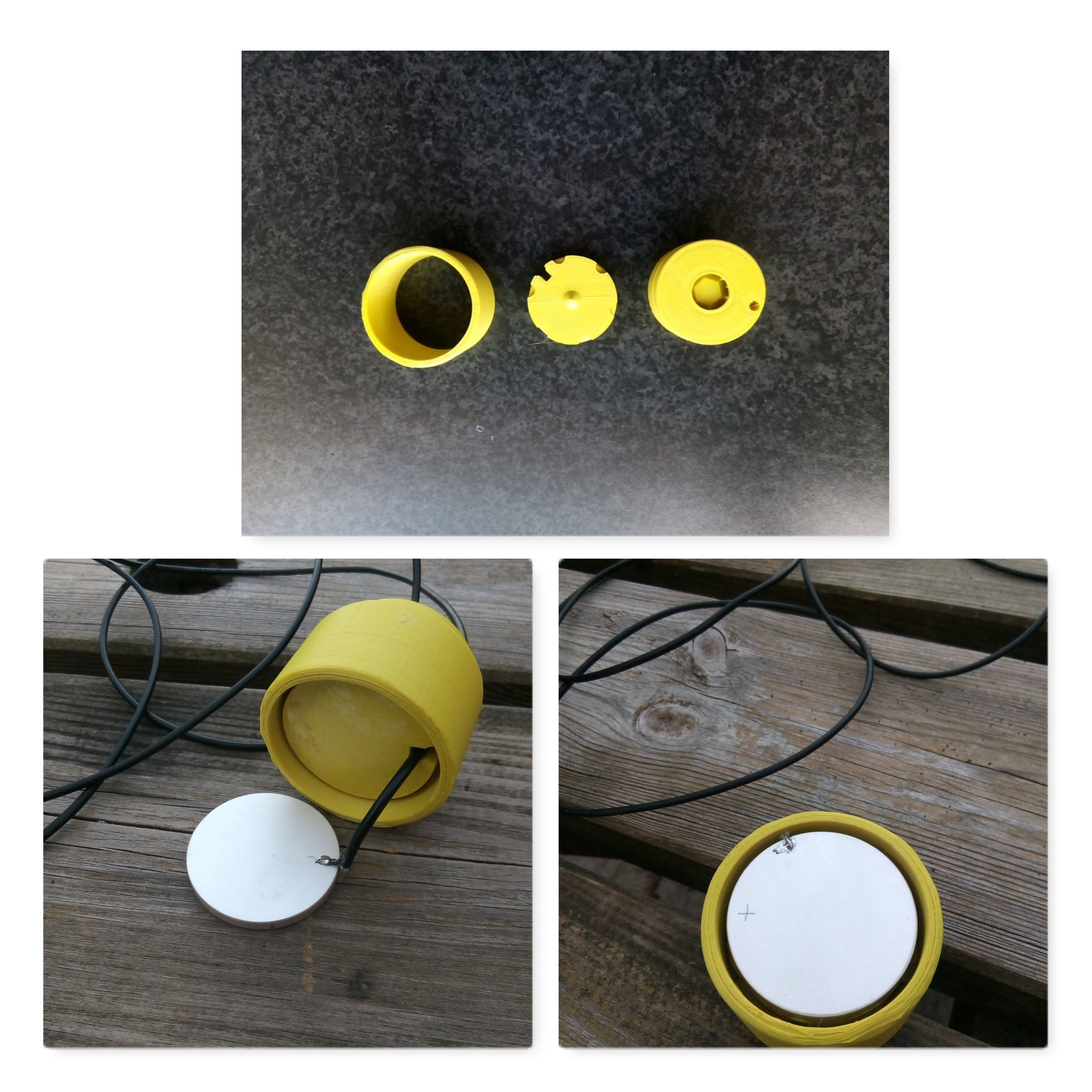
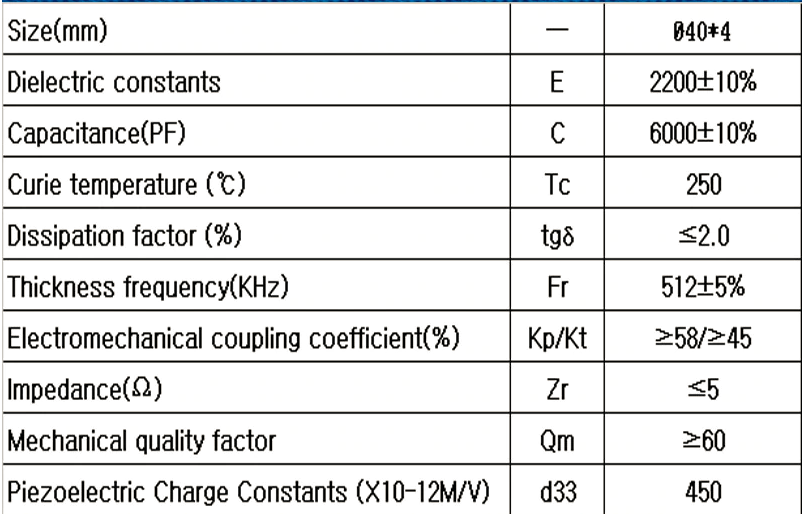 This disc has a 'thickness frequency" of 512 kHz which is a frequency that is commonly used for short / medium range echosounders. Depending on circumstances, ranges of 50 to 100 m should be possible.
This disc has a 'thickness frequency" of 512 kHz which is a frequency that is commonly used for short / medium range echosounders. Depending on circumstances, ranges of 50 to 100 m should be possible.